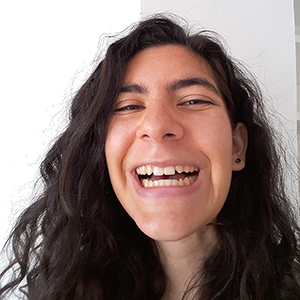Presentation explores history of Hoosier natural resources, variety of effects
Environmental history essentially is learning from the past in order to create better ways to use and sustain our natural resources.
It’s studying the interactions — the positive and the negative — between nature and human nature.
Often in Indiana history, the beauty of natural scenery – our forests, lakes and open land – has collided with the extraction of natural resources, such as extractions from oil wells and other energy sources.
The narratives of Indiana’s environmental-history landscape “are never just about landscape,” explains Ava Tomasula y Garcia.
They are about people’s interactions and their positive and negative consequences, too.
The wide-ranging connections provide the background behind an upcoming IU East Facebook Live presentation by Garcia at 6 p.m. on Wednesday, April 20. The presentation, “Gas and Oil, Dirt and Ghosts: Landscape and Histories of Extraction in Indiana,” is open to the public.
Garcia is a student-writer-labor organizer who has deep roots in northern Indiana and whose background offers variety like her presentation topic. She’s studying for a Ph.D. in Anthropology at Columbia University and also writes fiction and nonfiction.
“This focus on natural resources also reaches into aspects of racism,” said Beth South, assistant librarian and archivist for the Campus Library at IU East.
Garcia’s talk will center on the gas boom of the 1880s and the steel and fossil-fuel industries. It also will touch on topics of humanity, such as Native Americans being driven off their lands and on the minority issues of yesterday and today.
South applied for the grant to fund the talk and other campus community activities that are part of a year-long initiative by Indiana Humanities that is titled “One State/One Story.” It is centered around the popular book World of Wonders: In Praise of Fireflies, Whale Sharks, and Other Astonishments by popular poet-essayist Aimee Nezhukumatathil.
The Indiana Humanities website explains: “We encourage Hoosiers across the state to pick up World of Wonders to connect and reflect upon the natural world and find your own wonders in Indiana’s landscapes.”
Garcia’s talk is additionally sponsored by the IU East Office of Sustainability and the Campus Library.
It is intended to be educational and to invite discussion.
The presentation is part of Earth Week activities on campus (April 16-22).
Other activities are planned as part of the Indiana Humanities initiative and the grant that IU East received. They include community readings of World of Wonders (free copies are available) and a virtual scavenger hunt for students, whether they take classes on campus or online. The World of Wonders Scavenger Hunt is April 1-22.
“The students go out and do different activities. They could take photos, plant a tree or visit a state park,” said South, who is a member of the Sustainability Council at IU East. “No matter where they are, they can participate. We are always working on more opportunities for outreach.”
She believes that streaming the presentation is helpful in other ways of outreach: It’s available for anyone to watch and it provides a way for the speaker to reach a wide audience without having to travel.
The connection with Indiana Humanities – its programs and speaker’s bureau – is a natural, South said.
“A lot of their programs intersect with libraries. We are small enough that we can easily connect … They are big on trying to get Hoosiers to read, engage and think. They really focus on sustainability and the environment,” South said.
South applied for the grant in September. IU East is one of 31 non-profits that received one.


